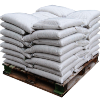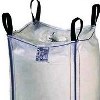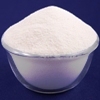| Aadhunik Industries is a manufacturing group company. Aadhunik Industries is pioneer manufacturers of Specialty Chemicals, Pharmaceutical Excipients, Food Fragrance & Flavor chemicals in India. It has toll manufacturers and representatives in UAE, Europe, Canada & USA and agents & customers in all countries like USA, Canada, Europe, UAE Dubai, South Africa, Tanzania, Kenya, Egypt, Nigeria, Uganda, Turkey, Mexico, Brazil, Chile, Argentina, Malaysia, Indonesia, Thailand, Korea, Japan, etc. Halal & Kosher certified Potassium Iodate Manufacturers made in a FDA-GMP-GLP plant is offered. |
| The units have one or more of the certifications like FDA GMP, ISO 9001, ISO 22000, HACCP, REACH, Kosher & Halal and DMF support is available. |





Potassium Iodate Pure BP USP FCC Food and ACS Reagent Grade Manufacturers
Potassium Iodate
Technical & Pure BP USP FCC Food and ACS Reagent Grade Suppliers

SDS MSDS Sheet of Potassium Iodate Manufacturers
We offer Potassium Iodate USP BP IP Pure AR LR ACS Analytical Reagent FCC Food Grade.
Potassium Iodate BP
KIO3 -- 214.0 -- CAS Number 7758-05-6
DEFINITION
Potassium Iodate contains not less than 99.0% and not more than 101.0% of KIO3, calculated with reference to the dried substance.
CHARACTERISTICS
A white crystalline powder.
Slowly soluble in water; insoluble in ethanol (96%).
Dissolve 10 g of the substance being examined in sufficient water to produce 200 ml (solution S1).
Add 25 ml of hydrochloric acid to 6 g of the substance being examined, evaporate to dryness and repeat. Heat until iodine is removed. Dissolve the residue in 2.5 ml of a 25% v/v solution of hydrochloric acid and dilute to 50 ml with water (solution S2).
IDENTIFICATION
A. 1 ml of solution S1 yields reaction B characteristic of potassium salts.
B. Dissolve 0.1 g in 5 ml of water. Add 1 ml of silver nitrate solution followed by 1 ml of sulphur dioxide solution. A yellow precipitate is produced immediately.
TESTS
Acidity or alkalinity: pH of solution S1, 5.0 to 8.0.
Clarity and colour of solution: Solution S1 is clear and colourless.
Chloride, chlorate, bromide, bromate: Dilute 5 ml of solution S1 to 15 ml with water, add 20 ml of sulphur dioxide solution and heat on a water bath for 30 minutes. Heat to boiling, cool, add 10 ml of 18M ammonia and 20 ml of silver nitrate solution R2 and dilute to 70 ml with water. Filter, transfer 35 ml of the filtrate to a Nessler cylinder and acidify with 6 ml of nitric acid . After 5 minutes, any opalescence, when viewed vertically, is not greater than that produced by treating 5 ml of a 0.00165% w/v solution of sodium chloride at the same time and in the same manner (0.02%).
Iodide: Add 1 ml of 1.8M sulphuric acid to 25 ml of solution S1 and shake with 1 ml of chloroform. Any violet colour produced is not more intense than that of a solution prepared at the same time and in the same manner but using 5 ml of solution S1 and 2 ml of iodide standard solution (10 ppm I) (20 ppm).
Sulphate: Add 1 ml of a 25% w/v solution of barium chloride to 1.5 ml of sulphate standard solution (10 ppm SO4), shake and allow to stand for 1 minute. Add 12.5 ml of solution S2 diluted to 15 ml with distilled water and 0.5 ml of 5M acetic acid and allow to stand for 5 minutes. Any opalescence produced is not more intense than that of a standard prepared in the same manner but using 7.5 ml of sulphate standard solution (10 ppm SO4) diluted to 15 ml with distilled water in place of the solution being examined (50 ppm).
Heavy metals: Adjust the pH of 20 ml of solution S2 to about 5 with 5M ammonia. The solution complies with limit test A for heavy metals, Appendix VII. Use 10 ml of lead standard solution (2 ppm Pb) to prepare the standard (20 ppm).
Loss on drying: When dried at 130° for 1 hour, loses not more than 0.5% of its weight. Use 1 g.
ASSAY
To 1.5 g add sufficient water to produce 250 ml. To 25 ml of the resulting solution in an iodine flask add 3 g of potassium iodide, 100 ml of water and 10 ml of hydrochloric acid . Close the flask and stand in the dark for 5 minutes. Titrate the solution with 0.1M sodium thiosulphate VS to a light straw colour and then complete the titration to a colourless end point using starch mucilage as indicator. Each ml of 0.1M sodium thiosulphate VS is equivalent to 3.567mg of KIO3.
Potassium Iodate FCC Food Grade
KIO3 -- Formula wt 214.00
CAS Number 7758-05-6
DESCRIPTION
Potassium Iodate occurs as a white, crystalline powder. One gram dissolves in about 15 mL of water. It is insoluble in alcohol. The pH of a 1:20 aqueous solution is between 5 and 8.
REQUIREMENTS
Identification: Add 1 drop of starch TS and a few drops of 20% hypophosphorous acid to 1 mL of a 1:10 aqueous solution. A transient blue color appears.
Assay: Not less than 99.0% and not more than 101.0% of KIO3 after drying.
Chlorate: Passes test (limit about 0.01%).
Iodide: Passes test (limit about 0.002%).
Lead: Not more than 4 mg/kg.
Loss on Drying: Not more than 0.5%.
Potassium Iodate ACS AR Analytical Reagent Grade Chemical
KIO3 -- Formula Wt 214.00 -- CAS Number 7758-05-6
REQUIREMENTS
Assay: 99.4-100.4% KIO3
pH of a 5% solution: 5.0-8.0 at 25C
MAXIMUM ALLOWABLE
Insoluble matter: 0.005%
Chloride and bromide (as Cl): 0.01%
Iodide (I): 0.001%
Nitrogen compounds (as N): 0.005%
Sulfate (SO4): 0.005%
Heavy metals (as Pb): 5 ppm
Iron (Fe): 0.001%
Sodium (Na): 0.005%
Potassium Iodate Pure BP USP FCC Food and ACS Reagent Grade Manufacturers
Aadhunik Industries
Ankleshwar Gujarat &, Mumbai, India
TEL: (OFFICE) 91-22-23774610, 23723564.
e-mail: info@aadhunikindustries.com

Exports to USA, Canada, UAE, Dubai, South Africa, Tanzania, Kenya, Nigeria, Egypt, Uganda, Turkey, Mexico, Brazil, Chile, Argentina, Europe Netherlands, Italy, Spain, Germany, Portugal, France, Malaysia, Indonesia, Thailand, Vietnam, Korea, Japan, etc. ok
Copyright and Usual Disclaimer is Applicable January 20, 2022